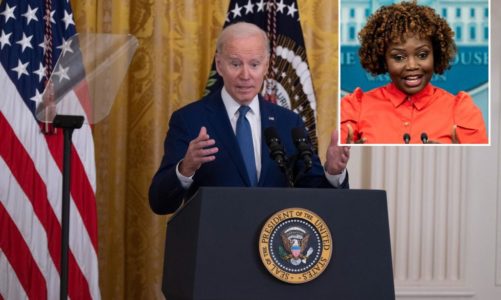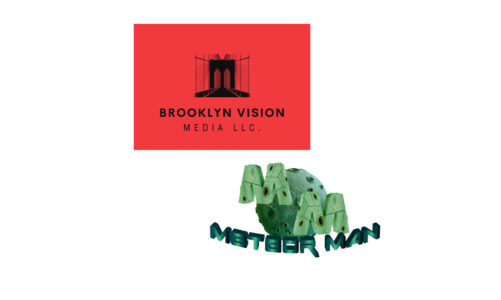Dr. Jonathan Kenigson, FRSA*
I intend the current article for politicians and policymakers concerned with the psychological implications of the growth of global megacities during an era of unprecedented global warming. As a representative example, we shall briefly consider Dubai – a city in which climate change mitigation efforts will likely induce rapid evolution of the urban landscape in response to environmental challenges.
Dubai’s economic success can be attributed to tourism, commerce in crude oil, a vibrant information technology startup culture, and logistical advantages afforded by its strategic location (Sharma et al., 2019). Financial technology startups are among the IT sectors prominently represented in the city’s diverse entrepreneurial ecology (Haddad et al., 2019; Schilirò, 2021). Dubai’s economy – though resilient and exquisitely diversified – is immediately susceptible to fluctuations in crude prices; economic inequality between Emirati and foreign guest workers; and heavy dependence upon foreign labor and investment (eRoutledge, 2023). Despite these challenges, careful building regulation and industry-collaborative urban planning have contributed to the measured expansion of critical infrastructure, housing, and amenities in light of population growth, immigration, and market diversification (Abdalla et al., 2023; Nadkarni, 2019). Few studies have attempted to determine the psychological and social corollaries of such rapid urbanization.
Indeed, rapid urban development, however responsible in light of economic growth, poses psycho-spiritual challenges (anomie) for residents and visitors alike. Khanna (2010) explores the tension between neoliberal subjectivity and the free-market values prevalent in the Emirates’ culture of constant economic and geographic expansion; Alawadi & Benkraouda (2017) discuss the challenges urban planners face as they navigate the competing demands of businesses and citizens competing for scarce development space. Alawadi (2016) argues that place attachment can be lost through rapid urban development, leading to the diminution of older sites that confer subjective civil significance. Breslow (2020) adapts Alwadi’s description of Dubai’s communities to describe them in terms of zones of formality and informality, persisting in constant flux due to unprecedented changes in the city’s urban geography.
In Dubai’s case, anomie must be managed in light of architectural and urban planning demands necessitated by anthropogenic climate change. Likely challenges include extreme heat due to latitude and prevailing ocean currents; potentially significant sea-level rise in the coming century; unexpected changes to the flora and fauna of the Persian Gulf’s ecosystems (Bauman et al., 2014; Bolleter et al., 2021; Murtagh et al., 2022). Rapid economic development has made it challenging for longer-term planning initiatives to receive the support necessary to ensure ecological sustainability in light of these factors (Amrousi et al., 2019). In 2019, Jong et. al. considered some challenges occasioned by anthropogenic climate change that may hinder sustainable urban development in Dubai if left predominantly unaddressed. In contrast, Al-Dabbagh (2022) has praised early efforts to improve sustainability in light of detrimental climate change. These authors are in agreement with Nadkarni (2019) regarding the prudence of Dubai’s continued preeminence as a global commercial meeting destination for the foreseeable future. Implicitly, Amrousi et. al. encourage the city to maintain this status despite the manifold challenges posed by anthropogenic climate change (2019).
The government should intensively discuss adaptive measures to moderate local temperatures (passive cooling, subterranean construction, and similar measures) and protect buildings and citizens against sea-level rises threatened by flooding of low-lying areas (Melville-Rea et. al., 2021). These measures should not be mediated solely by scientific and classical economic discussion, but rather by culturally situated discussions of the anomie engendered by necessary climate change remediation strategies.
Respectfully,
J. Kenigson
Works Cited.
Abdalla, S., Mushtaha, E., Rashid, M., Opoku, A., Hamad, R., Dweiri, F., … & Elmualim, A. (2023). Pre-design CSFs (critical success factors) of building projects for Dubai’s development boom. Built Environment Project and Asset Management, 13(3), 359-374. https://doi.org/10.1108/bepam-09-2022-0144
Alawadi, K. (2016). Place attachment as a motivation for community preservation: the demise of an old, bustling, Dubai community. Urban Studies, 54(13), 2973-2997. https://doi.org/10.1177/0042098016664690
Alawadi, K. and Benkraouda, O. (2017). The debate over neighborhood density in Dubai: between theory and practicality. Journal of Planning Education and Research, 39(1), 18-34. https://doi.org/10.1177/0739456×17720490
Al-Dabbagh (2022) Al-Dabbagh “Dubai, the sustainable, smart city” Renewable Energy and Environmental Sustainability (2022).
Amrousi, M., Elhakeem, M., Paleologos, E., & Misuri, M. (2019). Engineered landscapes: the new Dubai canal and emerging public spaces. International Review for Spatial Planning and Sustainable Development, 7(3), 33-44. https://doi.org/10.14246/irspsd.7.3_33
Ayoub, T. and Alheety, S. (2018). Tourism contribution to Dubai’s economic growth. World Journal of Research and Review, 7(5). https://doi.org/10.31871/wjrr.7.5.8
Bauman, A., Baird, A., Burt, J., & Pratchett, M. (2014). Patterns of coral settlement in an extreme environment: the southern Persian Gulf (Dubai, United Arab Emirates). Marine Ecology Progress Series, 499, 115-126. https://doi.org/10.3354/meps10662
Bolleter, J., Grace, B., Hooper, P., & Foster, S. (2021). Wet-bulb temperature and sea-level rise in the United Arab Emirates – planning responses. Planning Practice and Research, 36(4), 408-429. https://doi.org/10.1080/02697459.2020.1859199
Breslow, H. (2020). The smart city and the containment of informality: the case of Dubai. Urban Studies, 58(3), 471-486. https://doi.org/10.1177/0042098020903233
Formaneck, S. (2013). Skyscrapers and economic strategy and development: the case of Bahrain‟s proposed Murjan Tower. Journal of Economics Business and Management, 350-354. https://doi.org/10.7763/joebm.2013.v1.76
Haddad, M., Williams, I., Hammoud, M., & Dwyer, R. (2019). Strategies for implementing innovation in small and medium-sized enterprises. World Journal of Entrepreneurship Management and Sustainable Development, 16(1), 12-29. https://doi.org/10.1108/wjemsd-05-2019-0032
Jong, M., Hoppe, T., & Noori, N. (2019). City branding, sustainable urban development and the rentier state. How do Qatar, Abu Dhabi and Dubai present themselves in the age of post oil and global warming?. Energies, 12(9), 1657. https://doi.org/10.3390/en12091657
Kanna, A. (2010). Flexible citizenship in dubai: neoliberal subjectivity in the emerging “city-corporation”. Cultural Anthropology, 25(1), 100-129. https://doi.org/10.1111/j.1548-1360.2009.01053.x
Melville-Rea, H., Eayrs, C., Anwahi, N., Holland, D., & Holland, D. (2021). Science-policy integration for sea-level adaptation in the United Arab Emirates.. https://doi.org/10.5194/egusphere-egu21-15727
Murtagh, N., Badi, S., Shi, Y., Wei, S., & Yu, W. (2022). Living with air-conditioning: experiences in Dubai, Chongqing and London. Buildings and Cities, 3(1), 10-27. https://doi.org/10.5334/bc.147
Nadkarni, S. (2019). Conclusions: expo 2020 and its impact on Dubai. Worldwide Hospitality and Tourism Themes, 11(3), 341-345. https://doi.org/10.1108/whatt-02-2019-0011
Schilirò, D. (2021). Fintech in Dubai: development and ecosystem. International Business Research, 14(11), 61. https://doi.org/10.5539/ibr.v14n11p61
Sharma, S., Stranjančević, A., & Kleber, D. (2019). The effects of hosting events on destination branding: Dubai Expo 2020. Kinerja, 23(2), 91-102. https://doi.org/10.24002/kinerja.v23i2.2390
Stephenson, M. and Ali‐Knight, J. (2010). Dubai’s tourism industry and its societal impact: social implications and sustainable challenges. Journal of Tourism and Cultural Change, 8(4), 278-292. https://doi.org/10.1080/14766825.2010.521248




